roost
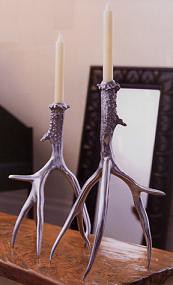
i love roost. there's practically nothing they make that i don't like. these new pieces are perfect for setting the mood on a cold winter night. elegant (or edgy) candleholders and a soft, cushy rug make any room a little warmer. available online at velocity.
Labels: accessories


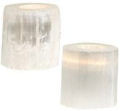


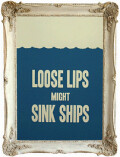
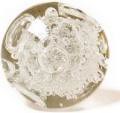
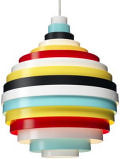




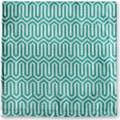

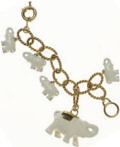





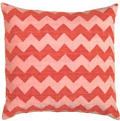
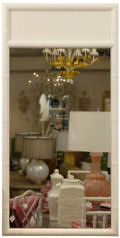

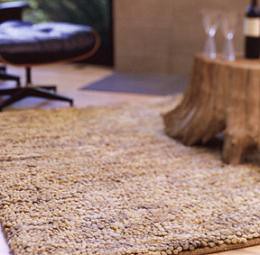
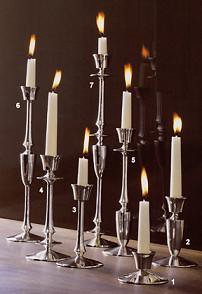

















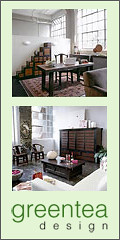




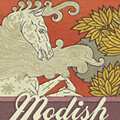







79 Comments:
i love roost too. everything is so organic, yet so modern and fresh.
The "Silver Spindle" candlesticks seem to be the poor man's version of a series designed by Ted Muehling. Does this type of thing bother anyone else? Just curious what opinions people have.
Anonymous.
These candle sticks simply aren't as good as Ted Muehling's work. While I also believe everyone should have access to good or even great design, there is an awful lot of backlash against work that is deemed too expensive. I think folks need to take the work in the context in which it is made. Much of the work that is expensive, is made in very small quantities, often by the designer. That has value. Alot of value in my book. No, I can't afford a lot of what I love, but I'm also not going to run off to Target for their cheap knock-off either. If I really want something special, I'll save for it, not just consume the cheap stuff as a quick fix. More posters seem to bitch and complain about price rather than discuss the merits of the work or even try to understand why something might cost what it does. And why is a candle stick not worty of a heafty price tag? What is? If anything? I don't think Ted Muehling is kidding about the price when one considers, the time put in, the expertise of years of work, the beautiful (and I would assume having seen lots of Muehings work), flawless production. I can't afford it either, but blueteabag, your "are you KIDDING me?? It's a candle stick!" belies your lack of understanding.
And. As for imitation being the sincerest form of flattery. Bunk. Those of us with actual design educations can attest to teachers encourageing us to imitate, copy even, the work we like. But. And this is a very big BUT. Students do this to learn and to grow and to ultimately find thier own voice. Those that go out into the world and knock off other designers are betraying their own talent and belittleing the talent of others.
Right on anonymous the second.
Whatever happened indeed to saving to have that really special thing that was made with care and love. It's so easy these days to run off to your nearest discount store and buy something that is sort of like your favorite whatever.
But, if one always does this, one always settles for second best, or worse. It's all about balance and priorites, but I have to say it DOES seem that the priority of many posters to this site is whether or not the item can be had for cheap. Or what they define as cheap.
I was at my local Home Depot just the other day. I was shopping in the lighting department for some quick task lighting when I spied a lamp that was familiar. I realised it looked like a KleinReid lamp I had at home. But no... Some other company has knocked them off. I have quite a lot of KleinReid and knowing a bit about ceramics, I can imagine the time and effort those guys put into each piece they make. And yes, they do in fact make each and every piece in Brooklyn. That is worth so much more to me than being able to "get the look" for cheap.
It's about values I suppose.
"It's about values I suppose"
Well, I guess we could have endless discussions about this. About just what kind of "values" we are discussing (unless the poster was just being careless).
Just what are you saying? Good design must be expensive? Knock-offs are never good?
Please. Stop. If people love good design, who cares if it costs less?
I'd rather see people choose better stuff for less money than more crap.
Knock-offs are never good, thats 100% correct!
"If we limit ourselves to exact reproduction, we halt the evolution of the spirit." Brancusi
If you choose to be a designer at least have the decency to be original.
I wasn't being careless when I said it's all about values. I do think knock offs are never good. It is stealing. There are other ways to get well designed objects into more hands. Of course I believe everyone should have access to a well designed and beautiful object in a range of prices. I am a designer after all. What I object to is this sense I get from people that the cheap accessible stuff is somehow better. That everyone needs access to the same range of things. It almost seems like the expensive stuff is somehow bad. Here at design sponge we get people say stuff like "it's only a candle stick" or it's only MDF with no regard to what it takes in time and education and effort to create. Most probably don't know.
I think we are losing a sense of value in the things we consume. No one seems to want to wait to have that special something. We seem to go straight to Target for the knock-off or try DIY. More often than not, the original and often more expensive option is better for a range of reasons. Dumbing it down to be consumed by everyone just doesn't seem like the answer to me.
This didn't seem to post so here it is again.
I wasn't being careless when I said it's all about values. I do think knock offs are never good. It is stealing. There are other ways to get well designed objects into more hands. Of course I believe everyone should have access to a well designed and beautiful object in a range of prices. I am a designer after all. What I object to is this sense I get from people that the cheap accessible stuff is somehow better. That everyone needs access to the same range of things. It almost seems like the expensive stuff is somehow bad. Here at design sponge we get people say stuff like "it's only a candle stick" or it's only MDF with no regard to what it takes in time and education and effort to create. Most probably don't know.
I think we are losing a sense of value in the things we consume. No one seems to want to wait to have that special something. We seem to go straight to Target for the knock-off or try DIY. More often than not, the original and often more expensive option is better for a range of reasons. Dumbing it down to be consumed by everyone just doesn't seem like the answer to me.
I think the sense of value is lost because of all the knock offs and unscrupulous designers, afterall the general public aren't design literate, they dont know the difference between a design classic and a inspired "ripped off" product !
Democratic design is an ideal, but then again who wants to have exactly the same furniture or possessions as the next man ?
"Democratic design is an ideal, but then again who wants to have exactly the same furniture or possessions as the next man ?"
Ah... This is a problem, but with the gushing over Pottery Barn, Crate and Barrel, CB2 and, worst of all the rip off artists over at West Elm, you'd think we all wanted to look the same in our apts.
I also think democratic design has to be not only accessible in terms of cost to a wide range of consumers, but it also has to be built to last. Lots of the furniture ( with CB being a notable exception) and most of the textiles from the above mentioned are poorly constructed and just don't hold up very well.
"I think the sense of value is lost because of all the knock offs and unscrupulous designers, afterall the general public aren't design literate, they dont know the difference between a design classic and a inspired "ripped off" product !"
The sad thing is that most of the poster to this site purport to being design savy and many seem to want to run off to Target at the first sign that they might have to save for something.
"I think we are losing a sense of value in the things we consume. No one seems to want to wait to have that special something. We seem to go straight to Target for the knock-off or try DIY."
Hey, man, there's nothing wrong with DIY! I often find much more value in creating an object for myself than simply purchasing something. Of course I'd rather have someone's awesome design handmade than a knock-off, but if I'm inspired by a piece I can't afford, I WILL try to make a version of it for myself. I see nothing wrong with that whatsoever. It stimulates my creativity and gives me something I can be proud of at the end of it. I would think, with your line of reasoning, that DIY would be a great thing, as it would eliminate the running out to buy a cheap knock-off. Long live DIY!
Hi all, this is Corbett from Variegated.
For those of you who don't know us, we design and manufacture home accessories. www.variegatedinc.com.
I wanted to get in on this discussion because I think it is timely and important and one that is being had by many of us who are providing the goods you buy.
I too find it disturbing that cost has become such a concern not only on this blog, but in general. That ease of consumption and disposability (we've actually been told our work SHOULD be cheaper because it is just disposable) have overtaken having something really beautiful and well made that you can use and love for a long time. Maybe this is what was meant by "it's about values..." I think that consumption for the sake of consumption vs. buying for love and the long haul IS a value judgement. This isn't to say Target and the rest have no value either. I have these really great wooden candle sticks from Jo-Ann fabric that cost maybe $3 each. At that price, I can put 20 on my table (made myself from these really great cast iron cafe table legs and a piece of MDF painted glossy black-I just read the DIY comment to/from anon.) and make a big statement, but I also have candle sticks that were quite a bit more- it's just about balance I guess.
So. A little about us. Jim ( the other half of Variegated ) and I have spent the better part of nearly the last 20 (gasp) years as designers. We both have undergraduate degrees in Graphic Design from NC State and I have a MFA from Cranbrook. We've both practiced graphic design, garden design and textile design professionally, and I taught undergraduate typography for 3 years. That experience has a value that we do add to our work.
We have also decided that we want to be able to change our work as often as we like, to be able to add pieces, or take those away that aren't doing well. We also like to be able to do custom work for people. We also actually like to make things and we want to be able to make things in the US because we think it is important. To do this we have to either make the work ourselves, or contract out to sewers in New York (there aren't many of these sample houses left- they do an amazing job and we know that the ones we use pay a living wage and treat their sewers with respect).
This affects the cost in many ways. First, we aren't making many of any one item so the cost of production goes up from a sewing standpoint, and from a raw materials standpoint. Two, more often than not, if you buy a duvet from us, I've cut it and Jim has sewn it. If you order a printed pillow, it's been printed by us in the studio. You can call us up, order something and know that we put a lot of time and effort into making something for you to enjoy. All of our duvets are pieced together- some with as few as 4 panels and some with as many as 17 (I think), and the new stuff we are working on has many more. If we make just one of a particular style, it can take a full day to cut and sew a duvet from start to finish along with all the other things we need to do to stay in business.
Pricing one's work has to be the most difficult aspect of running this sort of business. We agonize over it each season. We want to make beautiful things that can be enjoyed by lots of people, but we also have to make a living. I read a post a while back regarding Aminity bedding ( our prices are comparable). Some comment was made about the cost of a duvet and the poster remarked that over the course of a year, the duvet cost around $1.00 a day. In that context it doesn't seem so much. I worry that people look a price tags and disregard something that would bring them pleasure because they can't impulse buy it that second. I have to agree with the other posters here who argue that saving for the real thing even if it takes a few months is worthwhile. If you really love something, you'll still love it in three months, or whatever and if you don't still love it, you've got a little cash to find something you do love.
I guess this all comes down to choices. We've made a choice to be committed to the handmade, small run, special item and this affects our customer and the price. While I think this has a higher value than running to buy a knock-off, I understand that not everyone agrees. I do think, however, that affordability is more than just the price tag. It is a complex system of decisions based on one's beliefs (values- since that word has been thrown out) about longevity/sustainability, willingness to save, real love for an object, quality.
I hope I've been fairly articulate. I'm not the best writing off the cuff, but wanted to get in on this discussion. I hope we can continue it.
Oh, one more thing. I have to chime in on the imitation as flattery comment. The anonymous who seems to also have a design education is correct. I was told as a student, and I told my students that a good way to learn (formal skills anyway) is to imitate what you like. Or try to anyway. This is a very good tool when one is just learning to articulate form. There is a line, however, when the student has to make the break and synthesize what they've learned from copying and make their own work. I agree that knocking someone off is stealing. There is a very fine line between being inspired by or even mining history and copying. It takes a talented designer to be able to knock off someone else. I think a lot of the companies who are putting out work that is suspiciously like someone else's could but the talent of their designers to better use.
Where I studied design we were never encouraged to imitate, even if it was in order to learn. We developed our own ways of thinking and our own justified styles. I think the "inspired from" or "Homage to" approach is insulting the to original creation and a waste of effort. It can become a bad habit and I feel that already designers spend too lond scanning design & deco mags for details or concepts to steal, instead of thinking for themselves.
I think you miss the point about imitating as a way of learning. There are lots of valuable ways to teach and that is one. The point is that when you are learning, you really don't know enough to think for yourself. Imitation can help. The point- and I think I made that clear- is ulitmately to synthesize what you've learned about form (and this really only applies to form, not content) and make it your own. Designers and artists are consciously or unconsciously inspired and influenced by history, culture, and context we imitate all the time even when we think we're being original.
OK, better analogy about imitation.
It's sort of like taking something apart and putting it back together again to figure out how it works.
It also can't be done without a discussion of what the student sees and why the student is drawn to a particular style/designer, whatever.
Again. Always the point is greater understanding, not stealing.
I would imagine this happens across disciplines from writing, fine arts, to other types of research.
Before design, I studied fine art, we did life drawing (the human body) to understand form and develop a drawing/painting style but we never copied a well known painting for greater understanding. As with everything there are many ways to learn.
You know, the merits of one design education over another are however interesting, not going to be resolved. All ways are valuable as long as the end result is greater understanding and growth. I've had teachers that taught both ways.
Bigger, and more interesting, issues have been raised. I think the question of what makes something affodable is fairly provacative. I too think we do often only think in terms of a price tag and the ability to purchase on the spot. I think Corbett has a good point in terms of affordability being a "complex system of decisions". Does anyone save or sacrifice anymore for the things they want that may be expensive? What are people's criteria for buying something expensive?
I know that I am willing to save for something I really love if I can't afford it that moment. But that thing has to be really special and I have to be able to see keeping it for a long time. You know, quite frankly, I'd rather spend the extra money up front than buy something shoddy that I'll have to replace anyway. I hate to waste things and the thought of our landfills overflowing with crap we've cast off because it's either broken, or we decided too late that we really don't love it is abhorrent to me.
It's amazing what I've found I can live without.
And how much does fashion play in all this.
Do people buy things because Domino or Lucky or whatever magazine tells them is good, or are people actively trying to figure out what they like for themselves?
The fact that Pottery Barn and West Elm are so popular makes me think people don't mind looking like their neighbor.
Harsh or not, good debate thanks, when your passionate about something....
Why is everyone anonymous though?
In terms of modern design, I believe there's an accessbility issue. If Mission is your thing, people can buy stuff at all different price points. But try to find a really cool contemporary couch, for example, that's not going to break the bank and let you afford to still buy an ottoman. You just can't. Most of the "stuff" we worship here at d*s is beyond the price reach of most people. It's not just about saving up for something, sometimes it's just too much. So I believe that any attempt to democratize design and make good design available to the masses is a good thing. In my house, I do the hi-lo thing. I've managed (somewhat successfully) to get some really nice stuff mixed with some ikea/cb2 stuff to pull of a decent look. But for many people the 'hi' is just out. Of course I'd rather buy the nicer, better built piece, but it's just not always an option. (for example, my current lust object: http://www.ligne-roset-usa.com/products/occasionaltables/tazia.htm)
I'm in no way condoning knock offs, but there's definitely an availability/pricing gap in terms of modern furniture.
Just because design is "democratic" doesn't mean that it doesn't have to be original.
I do think there is a huge distinction between imitation for your OWN personal use and imitation mass produced. I wouldn't imitate a product I couldn't afford and sell it, for example, nor would I even give it as a gift. And even if I DO want to imitate something, I try to think seriously about what it is I like about it - is it the lines, the shape, the texture, the color? What does it remind me of? How can I add a different spin or flavor to the piece to make it uniquely my own?
I realize that these aren't questions that major retailers or individuals always ask.
"Imitation is the sincerest form of flattery" doesn't ring true to me. "Inspiration is the sincerest form of flattery" perhaps is.
Thanks for the inside scoop on handmade products! It must be a tricky balance. I understand why many things handmade must be expensive (no way around it) but it still makes me wish that I lived a richer monetary life so that I could buy some of these awesome things.
- Anna
I don't find it very interesting that people here are "annoymous." They, like me, don't want to have to get a blogger account to comment.
Didn't see that, thanks.
Corbett here.
I don't want an account either so I'll put my name at the top.
Melissa.
I think the soap box you're getting on is fine.You have a good point. Jim and I talk about the fact that we make luxury items all the time. I have to believe that there is value in art and design and craft even in these times. I think there is a lot of pleasure to be had from things if one isn't just acquiring because one can. Sometimes it does seems pointless, but we try to balance that out by giving our time to causes we really believe in. We have a community group here in Hudson that we recently made these really great patchwork curtains for. We always end up with boxes of scraps that have no other use so we just sewed them all together into a really big quilt. We also donate those scraps to the kids group to make costumes for plays and such, and we're working on a silk-screening workshop. Bringing art and culture to these kids who have no access either is a really amazing thing.
My biggest beef with the knock-offs is that they hurt the original designer. I know people that work at some of these big retailers. They are quite talented designers and when I get a catalogue and can point quite literally to the references the products in those pages make, it really burns me up not only because I think it's stealing, but because I think it demeans the talent of the designers who have (and I do realize they have some choice in who they work for) to do the knocking-off.
I think democratic design has an obligation to be original. Maybe that can close the gap. The fact does remain that there will always be things that you or I or any number of people won't be able to afford, but I don't want sloppy seconds either. I want the things at my range of accessibility to be really beautiful and well made originals not something that looks like something I can't afford.
Oh...
Never knew.
it is exactly design blogs like this one that spreads the ignorance about true design...to the blogger: do you really know anything about design? or do you just want to be trendy and spread nonsense cosmetic crap?
ok let our 15 minutes of fame begin...
I'm hearing the good design comments and valuing that part of the discussion. And I hate to be put into a "whiners" group, but dude, I keep coming back to:
"I could NEVER spend $900 on a candle stick"
I couldn't either. Not even if I won the lottery tomorrow and had $400 million dollars. There are some things in my mind that have a price limit for how beautiful and useful they are. Now, that's just for myself. I'm sure there are many many people in the world for whom that does not apply. So perhaps it's just that we're all different flowers, so to speak, and affordability isn't always as huge a factor as I think it is - because even if I could afford $900 candlesticks, I don't think I could allow myself to buy them.
I think what saddens me about good design is often this money divide though, which is why I'm interested in this discussion. I think that design blogs like this one get a lot of "money" comments because it does feel like a big gulf - there's the beautiful thing we saw in the blog, and then there is the thing for *people like ourselves* that is actually affordable. I can't fault people for buying knockoffs, especially in decorative furnishings, because if the knock-off captured the beauty of the first piece for me, or good enough, then awesome! With useless or almost useless objects (like candleholders) I think most people are looking at things from an aesthetic view, and if they can afford a version of that aesthetic, then they are happy to buy it.
I know it makes me feel guilty to long for things I can't afford - but it would make me feel more guilty to buy something like $900 candlesticks.
Granted, there are things where there are exceptions for me - the chandelier with the webbing on it (further down the page) is SO AWESOME, and since that is the kind of piece that would hang in my home and be used every day, I find it more valuable. I guess the same could be said for the candlesticks.
Bah, I don't know what I'm talking about. I guess I'm trying to weigh the money with the value of other things you could spend on, and the lasting nature of the designed piece - perhaps candlesticks that expensive aren't so bad if you're passing them on to children as heirlooms or something?
i'm looking at the Muehling candlesticks side-by-side with the roost "silver spindle" candlesticks, and i'm not convinced that one is a "knockoff" version of the other. the beauty of the Muehling candlestick comes from the delicate and graceful execution and gorgeous finish, not from the design itself. if we are talking about "ripoffs" and "knockoffs" just a simple google search will show that Muehling's designs aren't that original either. compare his "candlestick #201"
http://www.mossonline.com/product-exec/product_id/34119/category_id/138
with the candlestick by Martinus van Stapele designed in 1779. Is Muehling ripping off van Stapele? Or are they all drawing from the same well...classical design? Compare this http://www.bluespringsgifts.com/catalog/item/1069298/597240.htm#image_1 with http://www.mossonline.com/product-exec/product_id/34121/category_id/138. Did Ted just smooth out the ornamentation and call it his own? No of course not. Ted was obviously inspired by classic candlestick design but he put his own spin on them. Roost could have been inspired by Ted's candlestick design, but they put their own spin on them. So why is it ok for Ted but not Roost? Because Ted's inspiration comes from far more years previous than Roost's? Does the distance of time forgive the transgression of the ripoff? Is it not ok to rip Ted off now, but will it be ok to rip him off in 100 years when he is forgotten? And don't get me started on the antler candlesticks...just type antler and candlestick into google and you will see it's not the most original idea. and what about the deer and the elk that the designers are ripping off. shouldn't we slip them a few dollars, too?
No Melissa. I didn't think that at all. It's more a discussion Jim and I have about what we do and if and/or how it has value.
Anna.
You totally know what you are talking about. Use of course comes into play when deciding on how much or little you want to spend. I covet a $10,000.00 bed. If I had the money, you better believe I would buy it and die in it and hopefully it would bring me pleasure and good rest for many years.
I know this discussion can be tedious and lots of cans of worms have potentially been opened, but I think we can look and discuss the merits of an object rather than just look and bemoan the fact that we can't have it. We are living in an increasingly design savy culture and I think that is great. The line between wants and needs becomes blurred when confronted by so much, though.
Gotta go cut and sew.
Quite frankly, as far as concepts go, everything's been done. This whole debate over originality is pointless. Ted Muehling's work will always stand out on its own, regardless of "knockoffs", because it came out of his head through his hands. Any objects made based on his series only makes Mr. Muehling's work more valuable, as you begin to see what exactly makes his work special in comparison to others.
Yes, good design should be accessible, and it will be, as soon as manufacturers open up their doors to designers who are capable of using the industrial process to create beautiful, intelligent objects. Until then, it'll cost a little more, especially if there's a lot of craft involved. The maker needs to eat and pay rent too, you know.
"Beauty is pleasure objectified"
it is exactly design blogs like this one that spreads the ignorance about true design...to the blogger: do you really know anything about design? or do you just want to be trendy and spread nonsense cosmetic crap?
ok let our 15 minutes of fame begin...
DUDE.
I KNOW WHAT YOU MEAN, AND YOU KNOW WHAT YOU MEAN, BUT THIS COMMENT IS JUST PROVOCATIVE AND LAZY. ELABORATE PLEASE.
I guess what I came to in my discussion is that while $900 aren't affordable or practical for ME (I'd always look at them and think, "$900 candlesticks, damn I can't believe I bought that), I'd buy that chandelier if I had the money (don't know how much it costs, but I wouldn't be surprised at $900 or more) because I can imagine myself loving it every day of my life in my house. Your comment on the $10,000 bed made me smile. I guess I'm realizing that it's different things for different people, and that it's hard to judge the pleasure someone might get out of an object.
That said, I'll still look at things like the candlesticks and wish they were priced lower for the common folk.
Sadly intellectual property costs money.
to martin ablaza-
"Quite frankly, as far as concepts go, everything's been done. This whole debate over originality is pointless." - people who say this has low to zero imagination...that's why your portfolio is just mediocre work...oh yeah, your lampshade looks like a rip-off of something popular too.
"Beauty is pleasure objectified" - hmm, cheesy.
Good lord, people. Get outdoors some!
Yikes.
please keep the comments about the issues at hand. unkind comments about individuals are uncalled for and will be removed if they escalate. besides, they sound sort of immature.
let's hope this discussion continues to examine the issue at hand. thanks to those who have posted such thought-provoking, on-topic, comments.
d*s
This is a wonderful discussion. I hope my 2 cents add something. I have tried (as a semi-educated artist, if that matters for anyone) to create 2 different businesses based on original design products. Both failed. It is so tough to make money within the niche-market of those who have $900 for a candlestick, are willing to part with it, and happen to enjoy my particular candlestick. Internet is helping, but this market isn't easy to reach. So, what happens to the original designs? Sadly, they sit unfinished or undistributed. Maybe there were great. Maybe they'd inspire a fever of Target knock-offs. But with a mortgage, kids, and whatever living expenses we all share, I simply can't lower price. It TRULY takes the high retail price you see to get this product to you. Lots of hours, custom materials... I netted about $5/hr on one piece. It is what it is. No one is trying to rob you. (Well, maybe some successful design shops get greedy.)But, a tiny production of a unique ORIGINAL item requires that SOMEONE pony up the cash. I am so thankful to all of you who see the value and make the investment. Please know that your purchase supports the artist and the arts market in general. There would be no Target knock-offs without the original artist and original buyers. Much thanks for your money and your understanding. It takes both.
Hey all,
I thought I would add a different perspective. You see, I'm a 'design engineer' for Boeing's new 787. I design and create the structure that surrounds you in flight.
I wanted to say that sometimes, when it comes to cost, designers need to account for manufacturing techniques better than in the past. Stamping, rolling, printing and such are all high volume techniques with high initial cost, but low product cost. However, most designers use the low volume techniques with low initial cost. This leads to a higher product cost. Consider a hand carved desk versus a machined desk. The machine is more expensive, but produces more product for less. It's actually a better product, too.
Personally, I think that many designers are charging way too much for their product. $900 for candlesticks is predatory, and certainly not necessary. Remember, while a designer's time may cost X amount, when you're sewing a cover, you're not a designer anymore, you're a seamstress, who gets .1X amount. That is almost never taken into account.
For sure, good design costs; quality materials and techniques are never inexpensive. But I believe that there is a lot of great value out there if you look around.
To quote Marla Trump "If you accept only the best, you quite often get it."
Comments can be sent to arbdesengatyahoodotcom
I just want to say how much I've enjoyed this discussion because it is something I grapple with too. We have no furniture in our living room because I can't stand to buy something disposable. I bought a beautiful Omann Junn table that is paired with $3 vintage folding chairs from Goodwill because that is what I can manage.
However, I also really agree with what alexander wrote. I wish there were more designers out there who DID consider the manufacturing costs when they sit down to design something (besides the ones that work at IKEA). Artistic vision is all well and good, but it does seem that there is no middle ground for modern designed objects. I wish there were more designers who designed for "the people" and less who designed for an elite few or a a throw-away culture with nothing in between.
regards,
trillium
1) the quote was santayana...not that it matters here.
2) I have no need or desire to defend my work.
3) antlers have been everywhere, its not just roost, its also at urban outfitters and all over brooklyn, and before that who knows where else before ted muehling's stuff.
Then there are designers like Tobi Wong, whose (early) work has a lot to do with the topic of originality. http://brokenoff.com
It's not a plug, I don't know him personally......
On the topic of affordability, there's hella jongerius for ikea. Her work became affordable when a manufacturer took the risk and went for someone a little more forward, and it'll pay off big time for them. The work that comes out of her studio is of course about 8 times more expensive. Do you have any idea how much it costs to run your own production? In a major metropolitan area?? Of course it'll cost an arm and a leg. You can only have so many unpaid interns.....haha
Martin,
You raise another interesting question... What does everyone think of the high end designers designing for Target? Opening can of worms.....NOW! Go:
It's amazing how much some people care about how other people's homes are furnished and decorated. I know they do, or people wouldn't consume home magazines like crazy, but I always assumed that was so that others could 'steal' ideas from other people's houses. I never realized they judged how original a person's home was or wasn't. Personally, I don't care if someone has a 50 cent rug or a 5000 rug. As long as they're happy. :)
Alexander the airplane man made a good point. several good points. as they say: 1% inspiration, 99% perspiration. what % costs more? what % deserves more? designers (and i'd like to consider myself as lurking among them)proudly consider themselves seamstresses or otherwise regular-laborers with a higher price tag due to the "inspiration" piece. interesting arrangement of materials, new techniques, etc. let's face it, creative people with ingenuity (and perhaps an advanced degree) aren't looking to make seamstress wages. like business consulting or medicine, there is something to be said (read: paid) for brainpower. afterall, ingenuity advances our civilization.
In terms of manufacturing costs. Yes, designers must consider these when creating an object. I doubt there are many designers out there (at least ones doing it on their own) who don't consider these costs as they are the ones who pay it first. What the general public must also realize is that the quantity produced directly affects the cost of manufacturing. I would gather that many of the small design companies out there choose to do thier own sewing or whatever because the minimums required of them to put an item into production are much higher than they expect to sell. It costs a lot of money upfront to put something into production with no guarantee.
This discussion ran through my mind all last night. It is a hard topic for me to justify due to the fact that I have always longed for good design to reach the masses. On the other hand I also believe that certain pieces are works of art that deserve the large price tag.
It has always disturbed me that many of us middle class designers and design junkies have a great thirst for these objects of art but are unable to attain them. The only group that is able to afford it is the wealthy. Is that not parallel to the argument? These people who can afford it do not always have the same appreciation as others who understand the design process and thought. They two might have the same mentality as those who run off to Target and buy the knock off.
I just feel like this is a class issue. To know that someone that knows less than I do is able to consume it without any thought truly gets under my skin.
Hey all,
After thinking about the discussion, last night I talked to my fiance' about it. She's also a design engineer working on the airplane. We both agree that with today's manufacturing climate it should be very easy build most designs.
I realize that investing in the tooling is expensive. Heck, that's what I DO for a living, but there are options. First, consider sourcing your designs outside a metroplex; there are small american machine shops begging for work, and they'll love to do something 'different'. OR, order your design online. You can send your design out to be bid upon. Go here: http://www.emachineshop.com/. My company has evaluated their capabilties, and while not up to aerospace standards, they are still very, very good (and inexpensive).
Continuing, nowadays, it's not even really necessary to have a storefront any more. Having a presence on the web is sometimes better. In fact, I learned about many design sites on the web before I ever saw them in bricks & morter.
So, there are options available. I would suggest that anyone interested in trying a new design look at these areas, and take a stab at getting something made. You might get a lot further than you think.
Oh, and one more thing, with 300 million people in this country, even a niche market is still a LOT of people
Oh, and if you're struggling with manufacturing methods, feel free to shoot me an email. I'll bounce it around my guys here, and see what we can come up with for you. You'd be surprised what they can do, nowadays.
arbdesengatyahoodotcom
Two interesting ideas from Megan and Airplane guy.
One is the class issue. At first I thought the answer to this was really simple. Getting stuff into the most hands ususally requires a designer to wholesale their work. Ultimately by the time you buy an item, it may have been marked up at least 4 times or more after cost. Designers have to make back the cost of the item which is more than materials + make some kind of profit so they may mark up from cost 2 or more times. Then the store that buys marks up 2 or more times.
It seems on the outset that, OK so that's how this biz works and it may not seem fair or whatever, but it is what it is.
However, Alexander makes a good point about the internet. If designers could make a reasonable living by not needing to wholesale, they could, in theory pass that savings on to the customer. This requires work on all sides. The designer has to trust that by limiting availability to a website (for example), customers will come. And obviously, customers, you must be willing to do that.
perhaps off topic a bit, but does this discussion come up in fashion, too? i mean how much is too much for a cool t-shirt, for example? i see such a range.
sadly some guys here are afraid of hearing a different point of view.
i agree with anonymous - people who don't strive for originality end up with such mediocre work.
lol. "i agree with anonymous" -- i'm wondering how many of us there are.... am i one of 2? 10? while i'd like to take credit, i've only written a few.
ps - my friend just bought her newborn an $82 t-shirt. i've been a big proponent (and will stay so) of supporting unique (especially handmade) design, but that one was hard to stomach. yikes.
somethin' gotta change.
Originality happens with a consistency in logic. Otherwise, it becomes contrived or merely stylistic and irrational (originality for the sake of originality). I guess we're coming from different perspectives.
I love that firms like BluDot are doing things for Target. And Hella for Ikea. However, not all "high end designers" manage to translate well into mass production. Some of the things at target appear to be "watered down" for the general public, while others miss the mark entirely. That said, let me add that originality springs from a consistency in logic, while consistency arises out of maintaining an innate yet malleable process/logic when exposed to vaious conditions. The more conditions you're exposed to, the more evolved your work is.
I don't think anyone's managed to captivate both the general public and the design intelligentsia since Charles and Ray Eames, though. But here's hoping.
Don't hide behind anonymity. Post a link and let's compare.
There were two comments here earlier this mornning. I hate to think this blog is being censored.
Perhaps they were nasty?
design*sponge said...
please keep the comments about the issues at hand. unkind comments about individuals are uncalled for and will be removed if they escalate.
THERE WOULDN'T BE A GOOD DISCOURSE HERE IF YOU CENSOR STUFF.
PLEASE LET THE OPINION OF OTHERS BE HEARD.
i read them. they weren't nasty and the person to whom they were directed did a good job of responding.
oh for gosh sakes, get over it!
i told you that if the posts continued to escalate in terms of being critical of people (especially in the immature way they were) i would remove them.
removing rude personal posts is hardly unfair. i gave you fair warning and if you continue to have a problem with it then i'm sure you can take your comments elseware.
i'm sick and tired of people attacking PEOPLE and not participating in the discussion at hand.
d*s
whoa! gotta bail now folks, "design big brother" is watching you!!!
Is not saying mean things about people that oppressive, Anonymous?
Those of us who want to speak our minds without the fear of being personally attacked thank you, D*S.
I'm all for heated debate, but I'm glad it's not cool to attack PEOPLE for their opinions here.
What is this, grade school? Do you really have to say mean things about people to get your point across, Anon?
Shelly
I'm curious about Martin's response as he was the one "attacked". I quite think he handled himself well. Sometimes, in order to have a good, open debate, we have to let in the kids who aren't so nice, too.
Sometimes we need to be willing to be attacked personally and to be able to defend ourselves. Having someone else make the distinction IS censorship and not fair to anyone.
I do have to say that the one who did the "attacking" hid behind anonymity and that's cowardice. If one can think of no other way to make a point besides a personal attack, please have the balls to sign your name.
Sorry. I'm Bob. I meant to choose "other" on that last post.
"Having someone else make the distinction IS censorship and not fair to anyone."
Censorship is perfectly fair on her own freaking website and after she warned people to stop their rude behavior.
Thank you, design sponge, for controlling this debate and limiting it to constructive perspectives. You are an awesome webmistress!
So much for the debate about design. I guess everyone would be happier if we could just look at pretty things and go "ohhh, ahhh" "isn't that pretty, I'm sooooo inspired".
And Anna, sorry. The web is public. Censorship should not be tolorated in ANY context. There are other ways to deal with personal attacks rather than extenguishing the voice. I happened to catch the comments before they were taken down, too. Perhaps everyone should email d*s and find out what the comment was and how Martin replied.
"And Anna, sorry. The web is public. Censorship should not be tolorated in ANY context."
Well, we disagree. I think that if a newspaper or magazine is allowed to regulate their comments (no one prints all the letters to the editor, do they?) then a webperson on their own site should be allowed as well. Frankly, it's generous of her to allow comments at all, in my opinion.
Censorship is held up so often like people have a right to say anything wherever they like, all the time. She doesn't want certain types of comments here, told people about it openly, and asked them politely to stop. I don't see her being at all unreasonable here.
If you need to say things a certain way, or the environment here bothers you, there are approximately 50 billion different spots on the web where you can do what you please. Your rights aren't exactly being trampled on because one webmaster took away a nasty comment.
I don't feel I lose one bit of anything if the debate is rid of people who don't know how to make their points in a civil manner without attacking someone else in the discussion. THAT behavior is pathetic and should not be tolerated (far too much of it on the web as it is) and I respect designsponge even more now for stopping it.
Now if anyone would like to continue the debate, I'm all ears.
If this person is still here, could you elaborate on this:
"That said, let me add that originality springs from a consistency in logic, while consistency arises out of maintaining an innate yet malleable process/logic when exposed to vaious conditions. The more conditions you're exposed to, the more evolved your work is."
Are you saying that the more conditions and restraints put on a designer (such as having to appeal to a mass audience and producing something cheap enough for people to buy), the more inventive they will become? Or have I got you totally backwards? Because I have always felt that was true - the more limitations you have, the more creative you can be - at least for me this is true.
I totally understand that not all high end design would translate to the "commoners" market. =) But is there a way for us to persuade or help more designers do so?
I see so much crappy design on a daily basis. I wish there was more out there and daily available for the public! What's the solution here? How can we help?
There should be a rules for posting listing that explicitly outlines what sponge thinks is and isn't an appropriate comment. Then we'd all know. And, she should post a disclaimer letting folks know when she has to remove a comment. I might feel differently if I hadn't read the comments. It's not like Martin was called a "fucking moron" or something. He was called out, and he defended his position quite well. I get the sense Anna that you don't actually know what was said.
"I totally understand that not all high end design would translate to the "commoners" market. =) But is there a way for us to persuade or help more designers do so?"
Good point Anna, I would like for you to define "commoners" market, though ( whatever it means to you- I'm sure we can all add to it ). It's too vague and I think there are too many variables. Like you've said, give us some constraints and let the creative juices flow.
I'm very encouraged that there is a debate here. I for one like to ohhh and ahhh, but I like to talk about what I like and don't like, too.
"He was called out, and he defended his position quite well. I get the sense Anna that you don't actually know what was said."
Nope, I don't, and I don't care. I still defend her right to delete what she wants. It's her own personal freaking property. We are here as GUESTS. She doesn't have to do anything you ask. And if you don't like it, well, tough. Care to add anything at all to the debate at hand, or are you just complaining?
-------
When I said, "commoner's market" I was being silly - I mean markets like Target or Crate and Barrel wherever people would get "designed" objects.
I guess that I maybe don't have as much to add to the design discussion - I am no graphic designer, although I like to think I can recognize good graphic design from my own aesthetics and knowing many in the trade myself and being familiar with what's considered "good." What attracts me most though, is the area of functional design - so that tends to be the objects I adore and buy. I am inspired by the idea that functional items don't have to be bland or utilitarian - they can be beautiful as well. I'm so thrilled when someone makes the effort to create a bottle opener, for example, that's stunning to look at - or a rug that evokes something beyond...well, a rug!
That's one of the reasons I get so excited about design blogs like this one. Every day, new objects to exclaim over! While I might not buy the majority of them, I am still thrilled that people out there are making these things.
Designsponge is better than a lot of blogs in my mind in that a lot of the things she posts are quite accessible - despite the occaisonal $900 candlesticks! But even those I love to see. I simply wish that a lot of the more stunning designed couches and chandeliers and whatnot out there was a little bit more accessible to the poor like me!
I really am interested in supporting and encouraging designers to market their things outside of the elite design community though - but price is a troubling factor. I realize the time and effort that goes into these pieces. I think that perhaps that they're caught in a design Catch-22 - maybe this is one of the down sides of the open marketplace - someone is always able to steal and co-opt your design to deliver a watered-down version that misses the point.
And Anna, sorry. The web is public. Censorship should not be tolorated in ANY context. There are other ways to deal with personal attacks rather than extenguishing the voice. I happened to catch the comments before they were taken down, too. Perhaps everyone should email d*s and find out what the comment was and how Martin replied. ---yeah, i agree!
let's read it!
hey anna, are you an intern here?
I am in no way affiliated with designsponge - I just like the site! I don't even know her personally, so you can dispose with the insider status accusations.
"And Anna, sorry. The web is public. Censorship should not be tolorated in ANY context."
You already said that and I replied. Got anything else to add? I don't know why you're so sorry about disagreeing either. I'm perfectly happy to disagree with you. But if all you're going to do is repeat that over and over again, there's not much for me to reply to. Boring!
I'm here for the debate and your comments are way off-topic. If you have issues with designsponge herself, perhaps email her?
Oh my....where to begin...In regards to that original topic (knock offs, "value" of design/design objects, etc.) I struggle with the concept of true knock-offs being acceptable. As a designer I am fearfully aware of one way in which the “system” works. There are always big name companies trolling the handmade section of the gifts shows scouting for the next big idea. Often a small purchase will be made for what will inevitably become production samples for that company. This is morally wrong, but unfortunately not necessarily legally wrong, at least in the minds of these large companies. Copyright law is sooooo gray. It is the case with smaller companies (like myself) that in the event of this happening would have no pull against a large company. Legal battles cost money, and many of us simply can’t participate in them. I fear the day it happens, but realize if I want to make my work accessible, it is bound it happen.
On another topic raised here, I do not completely agree with the comments of martin. “Originality happens with a consistency in logic” ..got to say, I don’t see it. I may be off here, but it sounds to me like he is comparing design to an equation. How can originality be derived from consistency??? Wouldn’t that culminate in repetition and ultimate a drawn out, rehashed aesthetic? I find “originality happens” through experimentation and exploration. If you take the exact same path your liable to end up in the same place. The challenge to discover something new and original I find to often be brought about by taking an approach never before considered. That simply is an avenue towards originality, and doesn’t ensure the design to ultimately be “good” or successful. If what Anna thought Martin was saying, (constraints lead to better design) I do agree with that. It causes you to find a new approach, a new path in other words which will ultimately lead you to somewhere new.
And Anna I get what your saying about mass market designs. I think people need to realize the difference between mass-marketed, mass-produced design versus knock-offs. Something designed with the sole intention of being produced inexpensively, offered inexpensively that still manages to read as a new, original, and successful is a truly a “good” design. There’s room for everyone, they all have their own merit. Mass-produced or hand-made, expensive or not, no one is twisting your arm to buy one or the other, just support originality and feel good about what you choose to live with.
Yes, Anna I did mean that in reference to constraints. It is in my opinion what differentiates design from art: Designers have to work within given constraints, (dictated by clients, function, production, etc) while artists have to make and define their own constraints (through examining culture and life in general and defining for yourself what is at its core). Yes, sometimes art and design overlap. I also agree with you that design*sponge has the right to remove what she wishes. It is after all her blog, despite it being displayed to the general public. Personally though, I don't mind being "attacked", I can handle it myself. I graduated five months ago, I'm not that fragile.
To Ryan, I do not mean repetitive patterns. Each person undergoes their own thinking process, and this is innate. It grows stronger and more complex with more experience. And that's when you know you do have an original, innate thinking process: the patterns change, yet there is still that x factor which keeps rearing its head, whether you're designing, or writing, or having a conversation. It has less to do with a style and more to do with a certain character. And, trite but true, experience does build character, and originality is almost synonymous with character, no? But I agree with you: originality does happen with experimentation. In my head, experimentation is you seeking new experiences and challenges.
Hi all, Jeremy from Niche Modern here.
I skipped some of the posts so hope i didn't miss anything crucial. Here's my 2 cents so prepare to lambast me if you disagree.
Airplane guy, you make some nice points but honestly they really don't apply to all designers, we're not all designing in aluminum and rivets!
Most of the posts on here indicate to me that you all don't know jack sh*t about manufacturing and taking a design to market. And a year ago I didn't either.
I'm the first to admit it.
It is horribly painful and difficult. And expensive.
We've risked everything we had getting our line to market. If it wasn't for a sugar-daddy client on another job funding everything (and me and the Mrs and bambina and cats all eating rice and beans 3 times day!) we never would have been able to launch our glass lighting. I don't know how most designers do it. We've been blessed with good press and VERY loyal customers who do appreciate the work. Some have money to blow, for others you can tell the purchase is painful, but they value it. That means a lot to me.
I understand the comment about expensive design being a "class issue" but I have to disagree.
Good design is (or should be) original. It is made in small quantities. It is not backed by huge manufacturing budgets, expensive machinery, marketing departments.
IT IS EXPENSIVE.
In my opinion it IS worth it.
But every person has to draw that line for themself.
I love Ted's work (even though I'm bored stiff with antlers) but I personally won't pay $900 for some candlesticks. Doesn't mean that someone who would or could isn't justified to. The world needs more wealthy people to support designers so we can eventually get our products made in larger quantities. I'm the first to say that I can't even afford my own light fixtures.
People balk at our prices, but have no clue about how hard or expensive it is to do anything in America. It sucks.
Our mission when we first started to do glass and porcelain products was to do everything local if possible, at least keep it in the US. That has proved almost impossible. (here comes the controversial part...) America is fast becoming an information society. Fuel is expensive. Americans are (gasp!) lazy. We can't even get bids from American factories and producers. The margins aren't good enough for them, the quantities aren't high enough. They can't be bothered to return emails or phone calls. Quantities of 1000+ get ignored. How is a young designer with a fledgling product supposed to fork over money for 100 pieces of anything let alone 1000?
And don't even get me started on the quality.
For the time being we are using a fabulous team of local people. But finding that team and assembling it took 2 years. And the cost of doing manufacturing locally is enough to put a company out of business fast. We decided to do our porcelain overseas so it WOULD be affordable.
It won't be $10 pieces like West Elm or CB2 but it won't be $900 like Ted's. But then Ted has earned his reputation and he is selling not only craftsmanship but ideas and originality and that is worth something.
I didn't think too much about trotting down to Target or Crate and Barrel a few years ago, but now that I'm involved in the design community and I make my living from it, I find the West Elmification of America really depressing. Their corporate headquarters and first retail store is a 2 minute walk from our design studio in DUMBO. I can go in there and point at half a dozen objects and name the designers that were blatantly ripped off.
Thomas Paul, Jonathan Adler, Roost (ironically)...and now on Target.com you can see that they've ripped off KleinReid's lamp, in addition to Home Depot.
We got an offer recently from one of our producers overseas to sell one of our designs where the prototype was "accidentally" seen in their factory by a large unnamed catalog company. They liked the design and wanted to use it. After we politely turned down the 5 cent per piece royalty, we shortly saw a very similar piece show up on their website. I won't mention any names but their initials are CB, you do the math.
We all want design to be accessible and affordable.
But I'm willing to go without a few things so I can afford my KleinReid lamp.
Whoever said it is about VALUES early in this post is right on the money.
There is also the very disturbing reality of the simple math of it all. Wholesale is the only way to get design to the masses. Getting to the point of wholesaling our products has been a trial by fire -- not for lack of interest, we have stores beating down our door to carry our products. The only problem is we can't afford to let them. Our entire pricing model is based on a very alchemical formula involving 3 variables: 1) What will the market bear 2) what are our base costs 3) what do we need to make off of the quantity that we think we can sell to put rice and beans on the table and start a paltry college savings plan for the baby.
If our cost is $2, then we have to sell it to a retailer for $4. They in turn sell it for $8. Sound great right? No problem except for East Palm and Lock Stocking Barrell are selling it for $3 and marketing the hell out of it. The quality is crap, but people won't know that from looking at the photo on the website.
I hope I didn't offend anyone with my gross over-generalizations, I feel very passionate about all of this. I was hoping not to write a long rant and rave, hope you all aren't bored to tears...
jeremy
Jeremy.
Well put and not so very grossly over-generalized either.
We struggle with all the issues you've mentioned... cost of American labor, quality of the labor (althought we've been really lucky on this point), fear of seeing your work knocked off. I could go on and on.
I like your point about Ted selling not only and candle stick, but craftmanship, ideas, and originality. I think those things are becoming divorced from the objects in people's minds.
You guys make really beautiful lighting that seems very reasonable to me in terms of cost.
I had a chance to check it out at the last ICFF.
Oh, I really like antler stuff. Maybe it's all the deer up here in Columbia County, NY.
-corbett
"We all want design to be accessible and affordable.
But I'm willing to go without a few things so I can afford my KleinReid lamp.
Whoever said it is about VALUES early in this post is right on the money."
It's not about VALUES. I cannot ever afford many of the designed objects I lust after. I. will. never. be. able. to. afford. them. That doesn't say anything about my values or what kind of person I am.
I could save and save and save and be able to buy that beautiful $1000 bedspread, perhaps, but I'd rather spend that money on my family and my future. And I don't see the fact changing that if Crate and Barrel for example, has a similar item for $100, people will buy it. It doesn't make them bad people for not buying something out of their reach - in fact, I find it pretty responsible NOT to overindulge in products that aren't really in your price range. Maybe one piece, every now and then. But not over and over again.
I'm afraid that nothing will change in this regard with the design world. Oh well!
No one said anything about overindulging over and over again. I don't think anyone should live beyond their means, either, but it there is a $1000.00 bedspread that I really love and think I'll have for many years because it is so well made and, well, I love it, then yes, why not save and make a few sacrifices to have it. That's what we're saying. Sometimes it's nice for many many reasons to have the real thing.
And... when you factor in things like your love for an object - and I don't mean fleeting lust - the originality, the quality, the fact you might need to save and sacrifice a little, then yes it does in fact become about values. Values and what kind of person you are don't necessarily go hand in hand. I know plenty of assholes who have great values about lots of things.
Hi I’m a furniture designer and all around design enthusiast. Here are my two cents.
I would like to articulate my opinion on the matter of original vs. knock-off through an analogy...sort of. Ok, here it goes.
I love George Nelsons Coconut Chair, and have forever. I can not afford it, I could save the $3,500 and buy it from Herman Miller, or I could buy it form whiteonwhite.com for $750. The Leather on the knock-off version will be of a much poorer quality, the proportions are slightly different, and perhaps the Polypropylene shell would be thinner or something. The one Herman Miller sells is made of metal plastic and leather and is exactly the same as the original production run. The Chinese knock-off is also metal plastic and leather, but not exactly the same as the original production run.
Goods that are mass-produced may include original design intentions, but it's not as if they were made by the designer her/himself! Now I personally believe that the knock-off that I am talking about is a particularly accurate example, and in some cases knock-offs can miss the mark by quite a bit. (i.e. a knock-off of the Eames lounger I have seen, proportions way off, which makes the chair uncomfortable, also upholstered in vinyl.) What I am saying is the original is a piece of Art, and in the case of the Coconut chair I would be talking about the design sketches, detail plans, etc, and maybe prototypes or pieces that were produced in its first conception. After something is being made by the thousands, when talking about common consumer goods, AND IS MARKETED AS SUCH it is no longer fine art and becomes Design. Now the real difference between the Herman Miller Coconut chair and the knock-off is the quality of the material, and (lets face it) most importantly the name recognition of the designer and the manufacturer. Sorry, but I think that is as far as the common consumer goes, (which might even be a stretch). So 3,500 for a Herman Miller or 750 for a fake.
I won't buy the fake one because I am crazy about this thing and if I had the fake, it would look the same but I would know it wasn't and it would just sit in my living room and remind me of how sad it is that I can't own a real Herman Miller George Nelson Coconut chair.
Personally I think it is great that practically the same exact chair can be offered to regular people. When I was a kid growing up in the 80's everyone had La-Z-Boys, (which is probably all they were looking for anyway) Imagine if "design classics" would have been offered at a price and place that would be accessible to middle class people of that era. It would have changed my life. I might have grown up in a technicolor wonderland instead of a sea of burgundy mohair and gross floral print.
As Designers we have to protect ourselves the best we can from being copied, if it is our design we deserve to be paid when its used. If it is copied unfortunately usually there is not much we can do. But if it means better options are available to more people, I’m ok with that.
Not sure if this is the point Dustin was making, but don't you guys recognize the difference between 1) the original (and usually very expensive) piece, 2) the high quality knock-off, and 3) the mass-produced big box retail junk knock-off? I mean, I have a replica Barcelona chair that I purchased for $3000, which is probably half what a 'real' one costs, but is still a rather significant amount of money to spend for just a chair. And yet despite being a knock-off, it is of excellent quality, and I love it dearly.
Post a Comment
<< Home